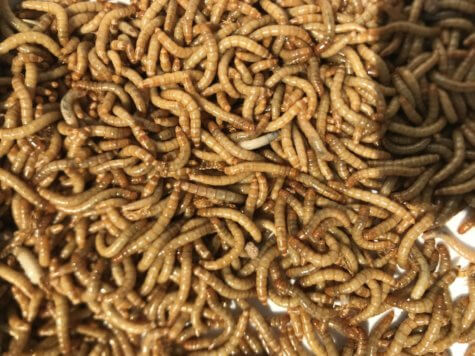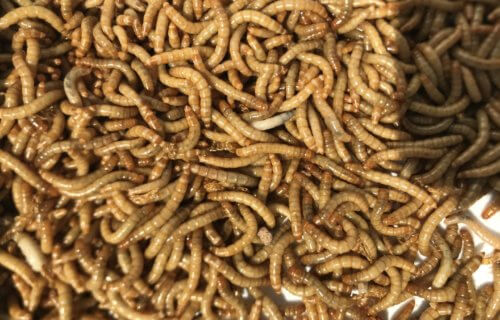INDIANAPOLIS, Ind. — When it’s time for dinner, most meat eaters probably think steak or chicken. A new study suggests people add another protein to the mix, but it’s not pork — it’s worms! Researchers in Indiana say the yellow mealworm may be the unlikely answer to rising problems with global food demand.
“Human populations are continuing to increase and the stress on protein production is increasing at an unsustainable rate, not even considering climate change,” lead researcher Christine Picard of Indiana University–Purdue University Indianapolis (IUPUI) says in a release.
The IUPUI team finds the mealworm species Tenebrio molitor is a promising candidate to be an alternative source of protein. Historically considered a pest, the study contends that these worms actually have a wide variety of uses.
From grass-fed to worm-fed?

Picard’s team says the yellow mealworm can serve as an alternative food source for many animals, such as fish. Their waste can also act as an organic fertilizer. Aside from helping to feed and fertilize farms, the IUPUI study contends companies could even use these crawlers in the meals you give your pets.
“Mealworms, being insects, are a part of the natural diet of many organisms,” Picard says. “Fish enjoy mealworms, for example. They could also be really useful in the pet food industry as an alternative protein source, chickens like insects — and maybe one day humans, too, because it’s an alternative source of protein.”
Worming their way into the food industry
With the help of Beta Hatch Inc., the study sequences the genes of Tenebrio molitor. Decoding the entire genome allows scientists to optimize the mealworm for mass production and, eventually, consumption.
“Insect genomes are challenging, and the longer sequence of DNA you can generate, the better genome you can assemble,” Picard, the director of Forensic and Investigative Sciences explains.
Study authors are now looking at the biological processes of mealworms, digging up all the information companies will need before producing them commercially.
The report appears in the Journal of Insects as Food and Feed.
Like studies? Follow us on Facebook!

This is soooooo incredibly frustrating. An “alternative source of protein.” Ridiculous. The average omnivore gets 78g/day off protein, the average vegetarian gets 74g/day, and the average vegan gets 70g/day. You know what the RDA is? 42g. That means that 42g of protein meets the needs of !98%! of the population.
A varied diet with sufficient calories (even without animal products) will always provide enough protein. Can we please stop talking about or looking for more sources of protein?